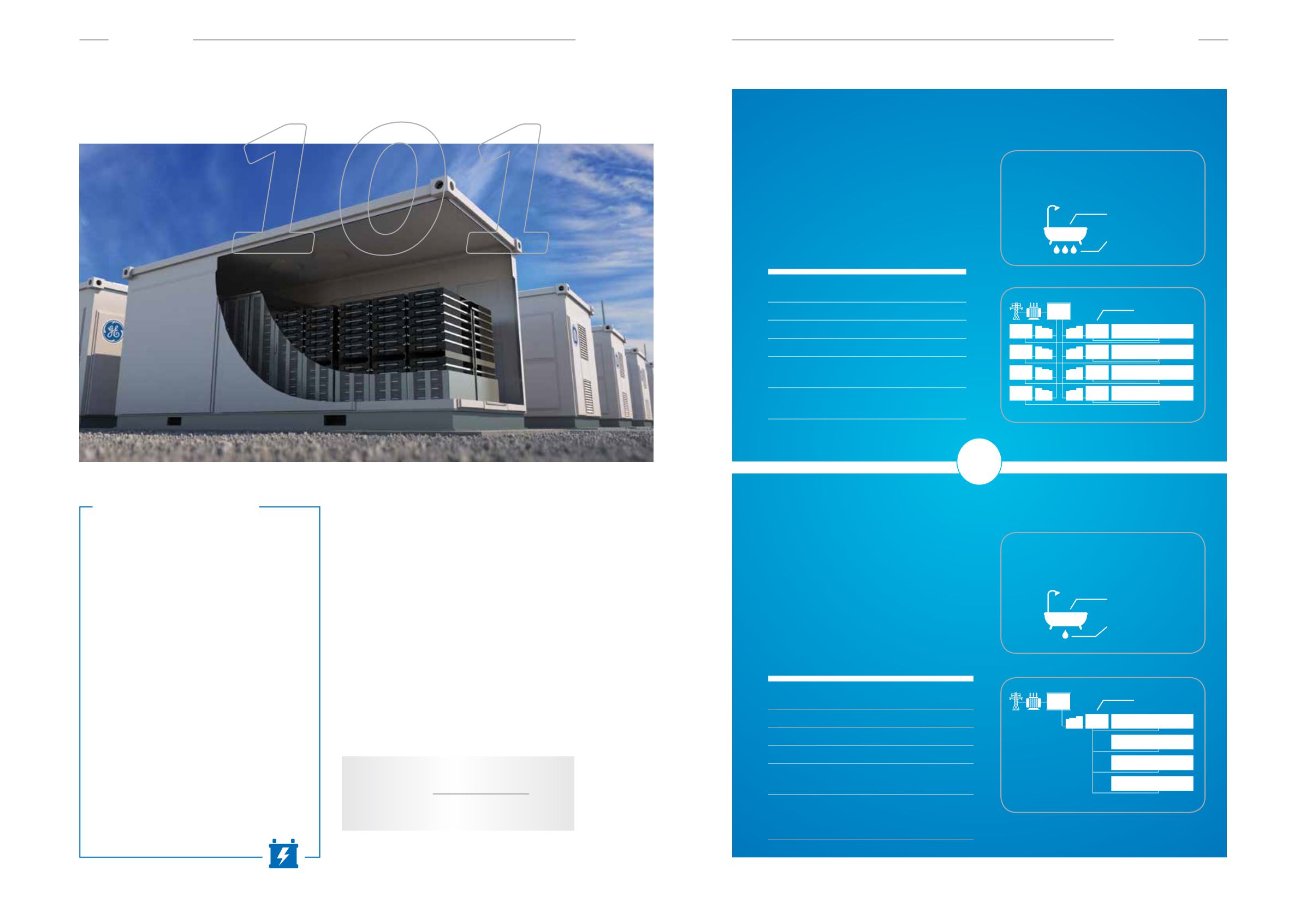

In an
energy configuration
the batteries
are used to inject a steady amount of power
into the grid for an extended period of
time. This application has a low inverter to
battery ratio and would typically be used
for addressing issues such as the California
“Duck Curve” in which power demand
changes are occurring over a period as long
as several hours, or shifting curtailed PV
production to a later time of the day.
Low Inverter/ Battery Ratio
Slow discharge
C rate of MW/MW-hr < 1
Low cost/MW-hr
Requires less space than a power
configuration
Typical applications include
“Duck Curve,” power makeup, energy
shifting, curtailed energy capture
In a
power configuration
the batteries
are used to inject a large amount of power
into the grid in a relatively short period of
time. There is a high inverter to battery
ratio required to accomplish this. A typical
application would be to simulate a turbine
ramp up for frequency regulation, spinning
reserve or black start capability.
High Inverter/Battery Ratio
Fast discharge
C rate of MW/MW-hr > 1
Low cost/MW
Requires more space than an energy
configuration
Typical applications include spinning
reserve, black start, fast start
VS.
Battery storage
BATTERY ENERGY STORAGE
systems are
typically configured in one of two ways, a
power
configuration or an
energy
configuration,
depending on their intended application. This is
accomplished by adjusting the ratio of inverters
to batteries in the system.
A simple way to envision this is to imagine a
bathtub; the volume of water in the bathtub
would represent the batteries and the drain(s)
in the tub would represent the inverter(s). For a
fixed level in the bathtub, several drain lines can
be incorporated, resulting in a rapid discharge (a
power configuration), or a single drain line can be
incorporated resulting in a slower discharge (an
energy configuration). In each case, the system has
the same amount of water (stored energy in the
battery), but the discharge rate is varied.
Bathtub analogy: Several drains for
RAPID CHARGE/ DISCHARGE
Batteries
Inverters
Bathtub analogy: Single drain for
SLOWER CHARGE/ DISCHARGE
p o w e r C O N F I G U R A T I O N
e n e r g y C O N F I G U R A T I O N
Batteries
Inverter
Megawatts
Megawatt–hours
C
rate
=
The oldest electricity storage device is
believed to date from approximately 200
BC. It was discovered near Baghdad, Iraq,
and is located at the Iraq National Museum.
Experiments have shown that this clay pot,
fitted with a copper electrode and filled with
vinegar or a similar acid, could generate
between 1.5 and 2 volts. The purpose of this
battery remains a mystery.
In the late 18th and early 19th centuries,
electrical pioneer Alessandro Conte di Volta
investigated the effects obtained when
different metals are placed in certain salt
solutions. In 1800 he designed a device that
had alternating discs of zinc and copper
separated by cardboard with a brine solution
as the electrolyte. His experiments are
the foundation for current battery energy
storage systems.
WORLD’S FIRST
bat t ery
Battery Discharge Capability
Batteries
Batteries
Inverters
Inverter
16 /
HYBRID SOLUTIONS
/
www.gepower.com/hybrid www.gepower.com/hybrid/
HYBRID SOLUTIONS
/ 17
t rends
t rends


















